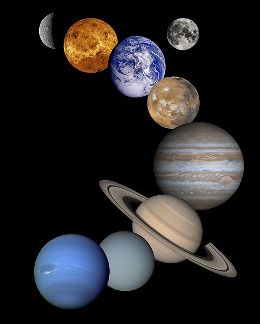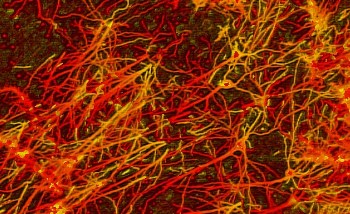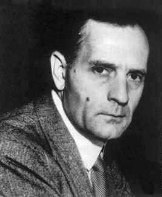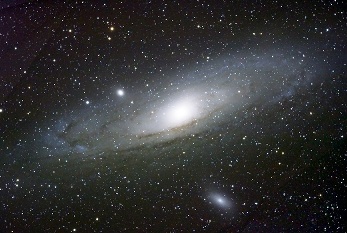Can Mathilde Ludendorff's philosophy stand up to today's science? She said the divine enters the physical universe and becomes subject to the laws of physics, thus Ludendorff's "Knowledge of God" is idolatry. But believed the "divine" started outside time and space
Donate: https://www.patreon.com/VincentBruno
Mathilde Ludendorff claimed to be in harmony with scientific knowledge with her knowledge of God. This does not preclude the possibility that individual examples which she uses to illustrate her philosophical statements are wrong from today's point of view. However, fundamental philosophical statements must never contradict the established knowledge of the natural sciences. Can this claim still be upheld today, decades after the first edition of the philosophical works?

Prof. Gerold Adam (1933 – 1996), biophysicist, published numerous articles on this topic under the pseudonyms Hermin Leupold and Wilhelm Schäfler in the journal "Die Deutsche Volkshochschule". These have been published in book form in the anthology "Philosophical Knowledge in its Relation to Natural Science", from which the following excerpt is taken (pp. 56-64).
"(...)
Overview of Mathilde Ludendorff's Philosophy
It is this second side of reality that is brought to the fore by philosophy.
While the first side, the rationally comprehensible side of reality, concerns "the appearance," the second side corresponds to the "essence of the phenomenal world." Since it lies beyond the insight of reason, it is also said to be the realm of metaphysics or transcendence; and by this we mean that we can see the transcendent aspects of truth, goodness and beauty shining from the phenomenal world and also from human deeds. Because the experiences of the beautiful, the true and the good were often shaped in works of art by ingenious creators, Mathilde Ludendorff also called this side of reality "the realm of genius". She did this especially in her first works, in order to avoid the word "God", which has already been given a completely different meaning by the world's religions. But metaphysics, transcendence, genius are foreign words that have little resonance with reality. Thus she soon returned to this root of the word and speaks of the "divine essence of the phenomenal world" or of the "divine", but makes it emphatically clear that by no means a personal God is meant, as in the world religions, but only the side of reality outlined above, which can be grasped by experience.
It is the meaning of human life to orient one's volition more and more towards the desires for the true, the good and the beautiful that arise in the human soul. With that, we now turn to the "story of creation" (3).
The Meaning of Becoming a Universe
 The meaning of becoming the universe was the emergence of a conscious living being that can experience the divine in its own decision. Thus, from a beyond space and time that is unimaginable to us, the divine has appeared. As the work "History of Creation" describes this process, the divine has gradually entered into the manifestations of space and time and cause and effect.
The meaning of becoming the universe was the emergence of a conscious living being that can experience the divine in its own decision. Thus, from a beyond space and time that is unimaginable to us, the divine has appeared. As the work "History of Creation" describes this process, the divine has gradually entered into the manifestations of space and time and cause and effect.
From the hereafter, or according to our present concepts, from "nothingness," it first entered a preliminary stage, the "ether," from which primordial matter, that is, matter, and its motion in space developed at the same time.
In giant steps, the universe then evolved, matter agglomerated into star systems, the stars evolved; from the gas and dust masses of an exploding star, the sun and its planetary system clumped together, and on one of these planets a state of matter called life gradually emerged. These incomprehensible accumulations of matter multiplied, grew and finally developed into a mammal that carries in its bony brain shell the most complex structure of the universe, the "human brain", formed of tens of billions of nerve cells and many trillions of connections, i.e. in the smallest of spaces entanglements and connections of almost astronomical multitude of elements in mutual interaction.

Compare this complexity to that of hundreds or thousands of nerve cells in a snail or insect. These simple creatures already have a plethora of meaningful, life-sustaining behaviors. With the number of nerve cells, however, the number of possible reactions increases disproportionately; this was probably necessary in order for something completely new to emerge: consciousness and spontaneous experience of the divine.
Divine experience can be freely chosen, and man is free to develop his life in such a way or to spend it as a hedonist, i.e., oriented towards pleasure and pleasure.
According to this philosophy, there is a close connection between the meaning of human life and the meaning or goal of becoming the world. The meaning of human life is seen in the fact that man is given the freedom to consciously experience the Divine before death and to transform his own soul into harmony with the Divine.
The bold basic idea of the philosophy of the "Creation Story" is that evolution serves the clear will to consciousness, that is, to a conscious living being. And not only that: the meaning or goal of the creation of the world is also this will to consciousness. Of course, the term "will" can only be meant in a figurative sense, and only for lack of a better word was a term from the human soul doctrine used. In no way should human soul movements be ascribed to the Divine.
(...)
What do the natural sciences have to say about this? Is the philosophical statement nonsense, speculation?
Well, first of all, the idea of seeing the evolution of the world in a connection with that of life was quite new. The evolution of the living environment from simple forms was recognized by Lamarck in 1809, Darwin in 1859, Haeckel, Weismann and Pflüger. The origin of life was still excluded, there was only some speculation about it. It was only Mathilde Ludendorff with her "Creation Story", Oparin (unknown in the West) in 1924, Haldane in 1928 (with a very short work). Then, in geophysics and protobiology, we learned that the primordial atmosphere was reduced. For example, the development of the Earth's atmosphere cannot be considered separately from the living environment and vice versa.
The primordial atmosphere contained 0.1% oxygen (O2), which absorbed cosmic rays, i.e. the radiation of the sun (and especially UV radiation) in the range of wavelengths of 2600-2800 Å, the range of absorption of proteins and nucleic acids. This protected them from incessant destruction. The development of atmospheric oxygen (O2) was carried out by algae and plants.
This is one of the first examples of the inseparability of inorganic and living development.
And how did the ideas about the evolution of the universe develop?
- Giordano Bruno (1548-1600), the most important philosopher of the Italian Renaissance, completed the separation of philosophy and theology! Starting from Copernicus, he recognized the "multiplicity of worlds", sees the "soulfulness of the worlds"; he writes: "Soul is the creative design principle of the world and of all individual things."
- Immanuel Kant (1724-1804) intuitively recognized the spiral nebulae as "star islands" in space, but scientific proof was still lacking at the time.
- It was not until 1924 that the intuitions of Bruno and Kant were proven to be true (Edwin Powell Hubble, 1889-1953)

- It was not until 1928 that it was scientifically possible to conclude that the universe had begun! Hubble detects the flight motion of galaxies, can measure them and infer the time of their concentration at a point from the escape velocity.
So, even before these exciting new scientific developments (the origin of life, the origin of the world), we find the philosophy of the story of creation in 1923.
On the basis of M. Ludendorff's knowledge of God, the entire (!) The history of the development of the cosmos, including the development of the living, is regarded as a single entity. Today, the natural sciences are increasingly coming to this view (H. v. Ditfurth, Hoyle).
- The conception of cultural development as a continuation of the natural history of development has only recently emerged (cf. Carsten Bresch).
Seventy years ago, Mathilde Ludendorff summarised all of this in a single philosophical body of thought: the whole development from the Big Bang to man and the further development in the form of cultures (see also 4).
Hubris – arrogance – presumption?
It remains a startling idea: the universe with billions of star systems, galaxies, and these in turn with billions of stars, all this effort just for this mammal?

The insight that it represents the most complex structure and function in the whole universe does not help much. The number of nerve connections in a single brain is comparable to the total number of stars in the visible universe from 1015 to 1018. In recent times – for about twenty years – cosmology, astrophysics and elementary particle physics have contributed significantly to the illumination of this situation, namely through the Anthropic Principle of Cosmology (5): this had its origin in everyday scientific work as a very helpful working hypothesis, but on the other hand is philosophically very interesting, regardless of its unexplained epistemological status in astrophysics.
Conclusion
In connection with a number of fundamental problems of the early history of creation, we have dealt with the interplay between philosophical (predominantly intuitive, holistic) statement and scientific statement.
Both do not give identical statements: natural science classifies phenomena in space, time and cause/effect laws, philosophy tries to grasp another side of reality, the essence of phenomena, which can be grasped in the forms of experience beauty, truth, goodness or similar.
Now the natural sciences have moved to the limits of the possible knowledge of reason, to phenomena so small or so large that the forms of thought of reason no longer fit exactly. Here, mathematical models can make a little progress, but the end is in sight.
It is precisely with such phenomena that we have been concerned. The surprising thing was that
- in these areas, science and philosophy are closely intertwined, i.e. come into very close contact, and
- that seventy years before the advance of natural science in this field of knowledge, philosophy made statements which proved to be unbelievably correct predictions. It is hardly believable to a rationally thinking person that one can "guess" such profound insights, as it were. For me, this has led to the following conclusions:
- In the detailed scientific work, the philosophical predictions can be applied as valuable working hypotheses.
- My confidence in the correctness of further statements on the meaning and value of philosophy has increased enormously.
(...)
Sources:
Hermin Leupold (2001): Philosophical knowledge in its relationship to natural science. Essays on the historical development of epistemology, on the evolution of the universe and consciousness. – Publisher: Die Deutsche Volkshochschule e.V., 23845 Bühnsdorf. ISBN 3-00-007494-5. 329 pages.




Comments
Post a Comment